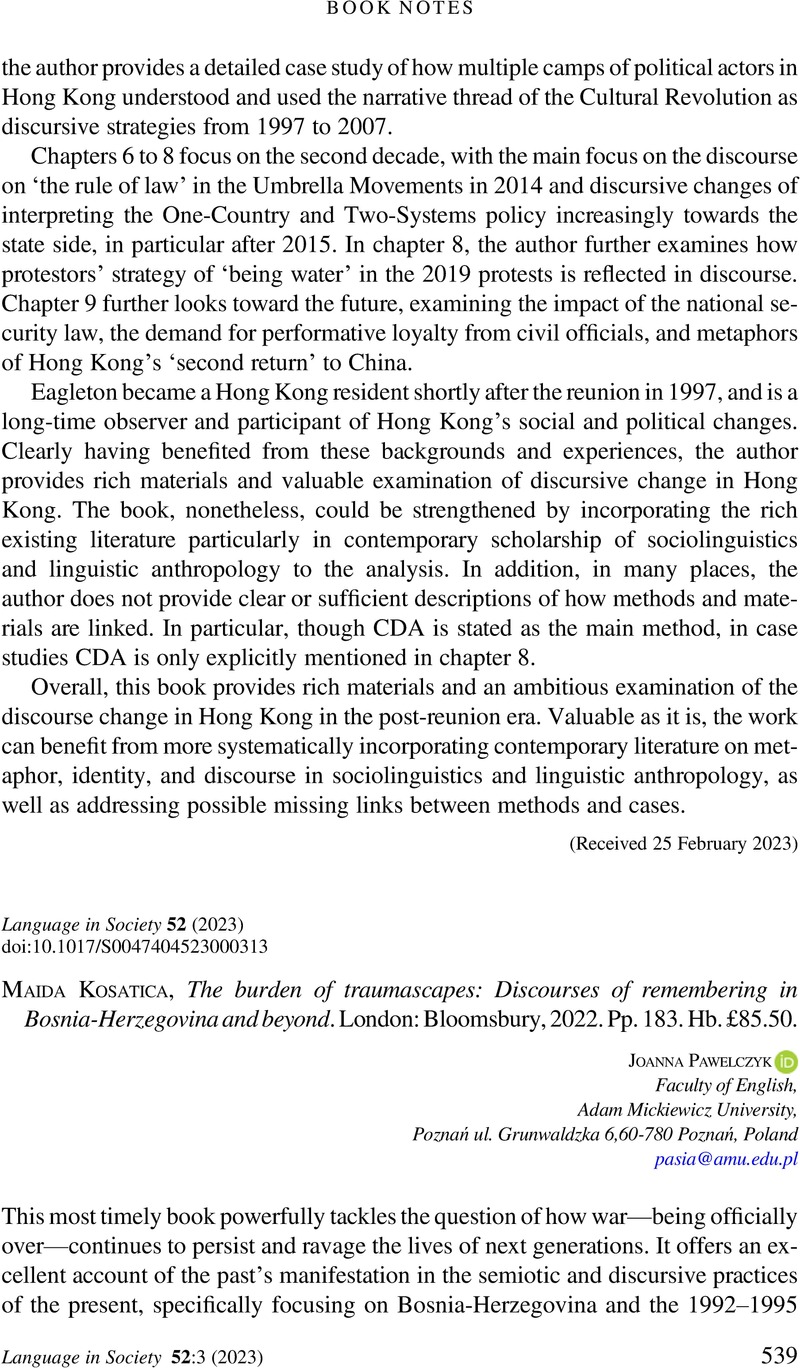No CrossRef data available.
Article contents
Maida Kosatica, The burden of traumascapes: Discourses of remembering in Bosnia-Herzegovina and beyond. London: Bloomsbury, 2022. Pp. 183. Hb. £85.50.
Review products
Maida Kosatica, The burden of traumascapes: Discourses of remembering in Bosnia-Herzegovina and beyond. London: Bloomsbury, 2022. Pp. 183. Hb. £85.50.
Published online by Cambridge University Press: 12 June 2023
Abstract
An abstract is not available for this content so a preview has been provided. Please use the Get access link above for information on how to access this content.

- Type
- Book Notes
- Information
- Copyright
- Copyright © The Author(s), 2023. Published by Cambridge University Press



